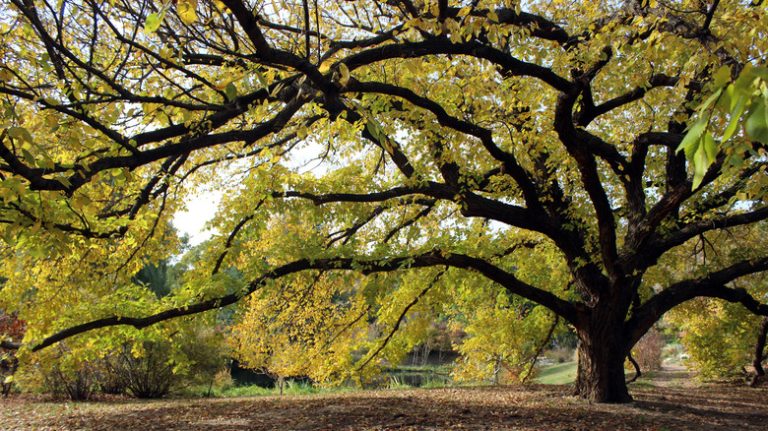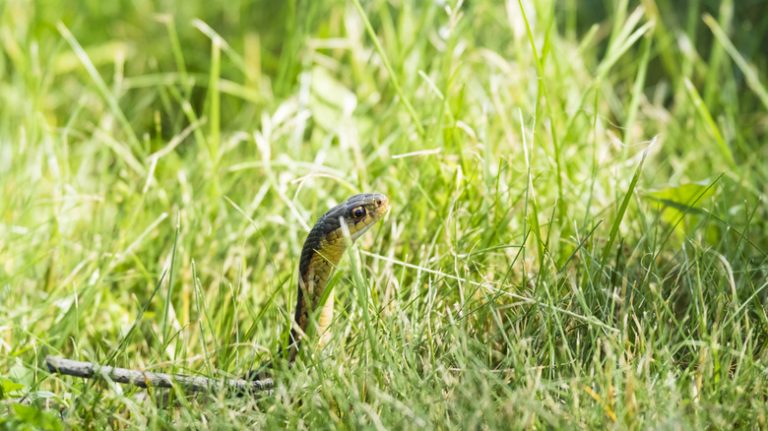The Norway Maple (Acer platanoides) is a large, deciduous tree that can grow up to 30 meters in height. It is native to Europe, from Scandinavia to the Balkans, but has been introduced to North America and other parts of the world. The Norway Maple is known for its impressive canopy of wide, yellow leaves, which spread across its branches, providing a beautiful foliage in the summer months.
Although not a native species, the Norway Maple has become a popular tree in urban areas due to its ability to adapt to a wide range of soil conditions and its resistance to diseases and pests. Its wood is also valued for its strength and durability, making it a valuable material for furniture and flooring.
One of the most distinguishing features of the Norway Maple is its winged fruit, known as samaras or “helicopters.” These seeds are dispersed by the wind and can be seen twirling through the air in the late spring and early summer. The fruit and seedlings of the Norway Maple can be an invasive species, as they can quickly spread and outcompete native plants.
When identifying a Norway Maple, look for its broad, palmate leaves with five to seven lobes. The leaves are dark green in color, turning yellow in the fall. The twigs of the Norway Maple are thick and green, with hair-like structures along their length. The flowers of the tree are small and yellow, appearing in clusters in the spring.
It is important to note that while the Norway Maple is a beloved tree for its attractive appearance and hardiness, it can be invasive and have negative impacts on native plant species and ecosystems. If not properly managed, it can spread quickly and crowd out other plants.
If you have a Norway Maple in your yard or see one in your neighborhood, it is important to be aware of its potential to invade. Regular maintenance and careful monitoring can help prevent the tree from spreading and ensure that it does not become a nuisance in your area.
Norway Maple: Is It Really a Bad Tree?
When it comes to the Norway Maple, opinions are divided. Some argue that it is an invasive species that should be avoided at all costs, while others believe it has its merits and can be a valuable addition to your landscape. So, what exactly is the truth about the Norway Maple?
Native to Europe and western Asia, the Norway Maple (scientifically known as Acer platanoides) was introduced to North America in the 1700s. Since then, it has spread across the continent, from Canada to Iowa and even into urban areas. Its ability to thrive in a wide range of climates and soil conditions has made it a popular choice for homeowners and landscapers.
One of the characteristics that makes the Norway Maple stand out is its perfect tree shape. With a height that can reach up to 50 feet and a wide canopy, it provides ample shade and foliage. Its leaves are similar to those of the native maple species, but they are larger and have a more round shape. They turn a beautiful yellow color in the fall, adding a vibrant touch to the landscape.
Another notable feature of the Norway Maple is its flowers. In the spring, clusters of yellow-green flowers appear on the tree, attracting bees and other pollinators. Later in the season, the flowers give way to seeds, which are shaped like pairs of wings. These seeds, called samaras, are lightweight and have a unique helicopter-like design that allows them to be carried by the wind over long distances, ensuring the tree’s spread.
While the Norway Maple may seem like a perfect tree, its invasive nature has raised concerns among experts. It can outcompete native species for resources, leading to a decrease in biodiversity. Its seeds can quickly establish and create dense thickets, shading out other plants. Additionally, its shallow roots and dense foliage make it difficult for other plants to grow beneath its canopy.
Another issue associated with the Norway Maple is its susceptibility to pests and diseases. It is particularly vulnerable to the Asian longhorn beetle and can provide an ideal breeding ground for this invasive pest. This beetle has caused significant damage to trees across North America, leading to their decline.
So, should you plant a Norway Maple in your backyard? While it can be a visually appealing tree and provide shade, its negative impacts on the environment should not be overlooked. If you decide to do so, make sure to monitor its growth and take measures to prevent its spread. Consider planting native species as well to promote biodiversity and maintain a healthy ecosystem.
| Height | Foliage | Leaves |
|---|---|---|
| Up to 50 feet | Wide canopy | Large, round, yellow in fall |
Where is the Norway maple from
The Norway maple (Acer platanoides) is a species of maple tree native to regions of Europe and western Asia, including Norway, hence its common name. It was introduced to North America in the late 1700s and has become a common urban tree species across the continent. Despite its wide distribution, the Norway maple is not native to the United States.
The Norway maple is often noted for its invasive tendencies, which have earned it a bad reputation among conservationists and ecologists. It can invade native forests and outcompete native tree species, especially in the eastern United States. The Norway maple spreads easily through its seeds, which are spread by wind and water. It is able to establish new seedlings quickly and at a high rate, which allows it to greatly increase its population in a short period of time.
One characteristic of the Norway maple that helps to identify it is the color of its leaves. Unlike most other maple species, which have green leaves, the Norway maple has yellow leaves that turn a reddish color in the fall. The branches and twigs of the Norway maple are also distinct, with a spreading canopy and hair-like projections on the stem. The flowers and fruit of the tree can also be used to positively identify it.
In addition to its invasive nature, the Norway maple is also known for its tolerance to urban environments. It can withstand pollution, compacted soil, and other stresses associated with city life. This means that it is often planted as a street tree or in urban parks. Despite its bad reputation, many people still appreciate the Norway maple for its wide canopy, which provides shade, and its attractive leaves.
However, if you live in an area where the Norway maple is not native, you should be careful when planting it. Invasive species can negatively affect local ecosystems and biodiversity. Instead, consider planting native maple species such as the sugar maple (Acer saccharum) or the red maple (Acer rubrum), which are better suited to your region and provide similar benefits.
In summary, the Norway maple is a non-native species introduced to North America from Europe and western Asia. It is known for its invasive tendencies and ability to quickly establish new seedlings. The Norway maple’s yellow leaves, spreading branches, and tolerance to urban environments make it easy to identify and a popular tree choice in many areas. However, caution should be taken when planting it to avoid negative impacts on local ecosystems.
Spread of the Norway maple
The Norway maple, an important tree species native to Europe and western Asia, has been introduced widely across North America, where it is considered an invasive species.
One of the main reasons why the Norway maple has become so widespread is its ability to spread through its seeds. The tree produces winged fruits, known as samaras, which are joined together in pairs. These samaras can be easily dispersed by the wind, allowing the seeds to travel long distances and establish new seedlings.
The Norway maple can also spread through vegetative means, with its branches and twigs taking root when they come into contact with the ground. This unique characteristic means that even small branches that break off from mature trees can create new trees as they take root and grow. This has contributed to the tree’s rapid expansion in urban areas.
One of the key factors that has aided the spread of the Norway maple is its ability to outcompete native tree species. The tree is highly adaptable and can thrive in a wide range of conditions, including shaded areas. Its dense canopy and large leaves outshine the foliage of native trees, giving the Norway maple a competitive advantage for sunlight. This has led to its dominance in many areas where it has been introduced.
In addition to its competitive advantages, the Norway maple is also relatively resistant to diseases and pests that affect other maple species. This has allowed it to outlast and outcompete native maples, such as the sugar maple, which are more susceptible to damage and decline.
In some areas, the spread of the Norway maple has even been facilitated by people who appreciate its aesthetic value. The tree is known for its vibrant yellow flowers in the spring and its beautiful red and yellow foliage in the fall. It is often planted as an ornamental tree in gardens and parks, unknowingly contributing to its spread.
Despite its negative impacts, the spread of the Norway maple can still be controlled and managed. Identifying and removing seedlings and saplings is one effective way to prevent the tree from establishing new populations. Additionally, efforts can be made to promote the growth of native tree species, which will help reduce the Norway maple’s dominance and restore balance to ecosystems.
In conclusion, the spread of the Norway maple has been an issue of concern, especially in North America, where it is considered an invasive species. Its ability to spread through seeds and vegetative means, its adaptability, and its resistance to diseases and pests have all contributed to its growth and dominance. However, with proper management and control measures, the negative impacts of this species can be minimized, and native tree species can be given a chance to thrive once again.




